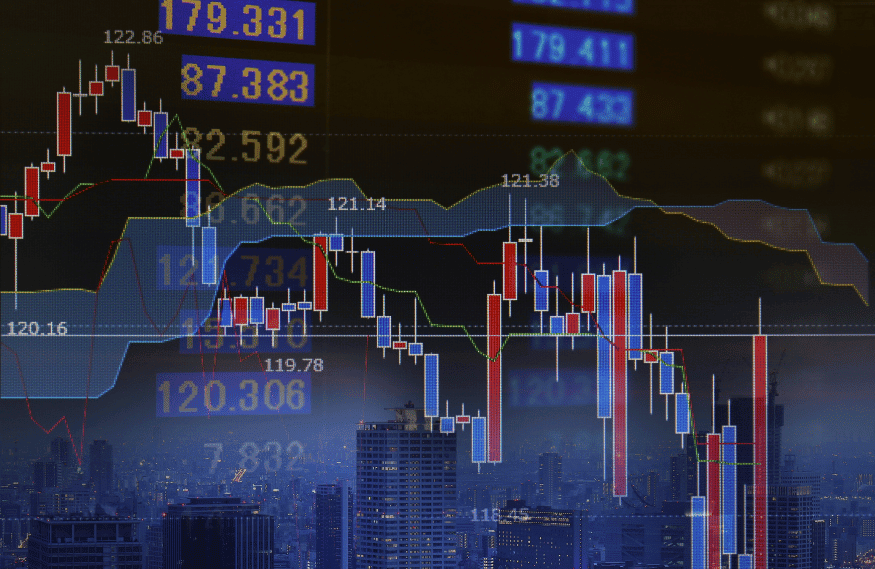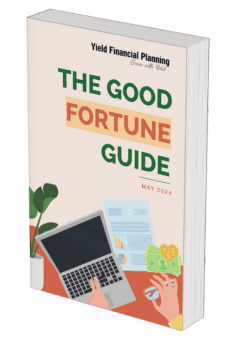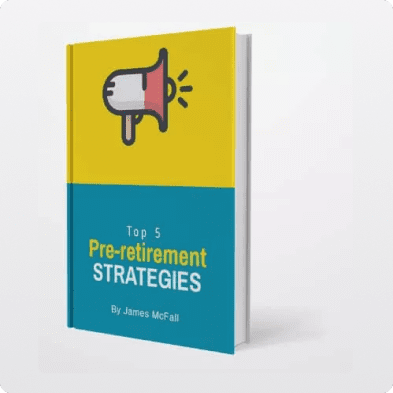2022 in review
If 2022 felt like a rough year for your investments, it was! The last year witnessed a storm of issues, beginning with an environment of rising interest rates, moving on to the Russian invasion of Ukraine, leading to a surge in commodity and energy prices and culminating in a series of interest rate rises across the globe as Central Banks sought to get inflation back under control.
According to a report in the FT, stock and bond markets shed more than $30 trillion during a brutal year. This, in itself, is relatively unusual. Normally, bonds and other fixed interest offer some stability when equity markets are volatile and help to cushion some of the falls. Unfortunately not this time. In fact, bonds and equities produced, by some reckonings, their worst combined performance for many decades.
After an environment of falling interest rates, which produced a long-term positive scenario for bonds, going all the way back to the early 1990s – it culminated in rates hitting the lowest lows in living memory, which was in the wake of the Global Financial Crash in 2008 – it seemed that interest rates were never going to rise. For more than a decade, that was largely true. However, the return of inflation has changed things. Even Japan has seen inflation hit the heady levels of 3.8%, a level not seen since the early 1980s!
In the past, I have explained how Central Banks act to control inflation by raising interest rates to curtail demand, and the number of increases in 2022, was faster than ever before. The US Treasury 10 year bond yield – essentially, the rate at which the US government can borrow money – moved from 1.4% to 3.9% during 2022, while in the UK, at the point of peak/trough Truss (blink and you may have missed this short lived Prime Minister), the rate at which the government could borrow had ballooned from 1.1% to 4.5%, before settling down a little by the year end to around 3.7%. In Australia, interest rates were raised a record eight times, from 0.1% to 3.1%. The days of governments being able to borrow money for fifty years at 0.5%, are, for now at least, behind us.

In terms of how this impacted your share market investments, higher interest rates and a slowing global economy, coupled with improving low risk returns available from cash, created headwinds. Add to this a surge in energy and raw material costs and it is easy to see how companies have struggled with the challenges presented during 2022.
For certain sectors – emerging technology companies for example – who were heavily reliant on investors keen to subsidise their current losses in the hope of future profits, the return of higher interest rates has been especially difficult, and they have seen their shares seriously rerated. But there were some sectors that benefited, such as the oil and gas industry itself, and their share prices generally reflected this.
Consequently, there has been a marked difference in performance between share market indices across the world, driven by the dominance of certain sectors. For example, the ASX 200 largely made up of financials and materials’ sectors, decreased by 5.4% in 2022, whereas the ASX All Ords (a much broader index representing 500 of the biggest Australian companies) was down 7.2% (excludes dividends). In the US, the Dow Jones Industrial Index was down 8.74%, while the far broader S&P 500 Share Index was down by 18.1%. This difference was even more marked in the UK, where the FTSE 100 Index – a global laggard for a long time – was up by 0.95% in the last year, while the FTSE Mid 250 Index – a far better barometer of UK plc – fell by 18.9%.
In a sea of red, there were few places to hide, but there were some pockets of exception. In terms of the major asset classes, the old adage ‘cash is king’ proved true, with cash providing a positive return of 1.3% (as represented by the RBA cash rate), making it the best performing asset class for the period. It’s not often we see this – in fact, cash has only beaten other asset classes on 9 occasions in the last 100 year or so! The other stand out performer was commodities. Buoyed by disruption to the supply chain, caused by China’s ultimately futile efforts to adopt a zero covid policy, as well as sanctions imposed on Russia following its invasion of Ukraine, the oil and gas price spiked, pushing up energy costs across the world. This fared well for Australian shares on a relative basis to many other countries in the world.
It doesn’t seem so long ago that we were reading about a negative oil price and how we were about to enter the post-oil age. These factors led to a collapse in investment, which meant that, when demand picked up suddenly, there was simply not the supply available. In fact, even with the push to a less carbon intensive future, we are likely to still have a structural shortfall in oil supply until the end of the decade. Which, combined with Russian sanctions, is likely to support the oil price.
Property markets generally fared poorly, with residential property in Australia suffering its worst peak to trough fall on record. Rapid interest rate rises took money away from buyers and forced some people to sell, though the latter did not happen to any great extent. In fact, supply remained fairly low, supporting values from falling further, and pockets of the market were relatively stable. Correlation exists between the best performing property coming out of covid, to those markets that have fallen fastest and hardest, with Sydney broadly leading the pack.
2023 Market Outlook
Dramatic change has been a global theme since the pandemic and the change of goods and services – ‘inflation’ – is one of the biggest examples of this. A fair amount of the inflationary pressures has been based on disruption to the supply of goods – whether that is Chinese imports or Russian raw materials. Fortunately from here, even if Russian oil and gas supply does not normalise for some time – the most likely outcome, as the war in Ukraine looks some way from being resolved – it appears unlikely we will see a further surge in commodity prices.
More generally there is a growing consensus view that we may have seen peak inflation in many countries across the globe. In Australia, our latest inflation reading was 7.8%, which is lower than other parts of the world and lower than the initial estimates of 8%. Treasurer Jim Chalmers shares the view of many leading economists, saying he expects/hopes that our inflation peaked in December. With this said, it is currently persistent, and only time will tell how quickly it comes back down to the Reserve banks (RBA) target level of 2 – 3%. The RBA will watch this closely, as inflation will determine how high, and then how long our rates have to remain at restrictive levels. This will in turn impact on the investment performance of all asset classes over time.
The share market has started the year strongly, and so far is rallying on the belief that inflation has indeed peaked; meaning that interest rates may not need to be raised as high as was initially feared; and the market is happy that the underlying economy is holding up better than many anticipated. This is all good news, however it feels like it could turn on a dime, if we receive unexpected bad news, and given the challenges described, risk remains. The first major hurdle for markets, is the company reporting season, as companies not only discuss their results achieved, but also their outlook, which many are still worried, will point to recession!
Keep in mind however that share markets are trying to predict what may happen 6 – 9 months ahead and the concept of a recession is not foreign to market participants. Indeed the broad market view in 2022, was that many parts of the globe would go into recession in 2023. Whether we do or don’t and how deep a recession may be, will be one of the key determining factors of market movements from here.
With this in mind, it feels like it could be a year of two halves, with the first half dominated by news of a slowing economy, a fall in inflation and a peak in interest rates. Then the second half dominated by the prospects of falling interest rates and economic recovery. This is, however, unlikely to be a straight line – life rarely works that way – so we should be prepared for some turbulence over the next wee while.
For property investors, we are likely to see a further softening in prices in the near term, while interest rates remain restrictive. One concerning factor is that almost 25% of Aussie home loans will come off historically low fixed rates and move to variable in 2023, seeing these loans increase by around 3 times or more – if this affects you, it is definitely timely to review your refinance options with us. This will undoubtably strain some homeowners and is likely to increase property supply, at a time of reduced demand. How much extra supply will be a determining factor for how much further property values slide. There is also a case for some stabilisation this year, as interest rates peak and potentially even drop later in the year in a bid to restimulate the economy. Keep your eye firmly on inflation to get a read on how likely this is however, because the RBA have made it clear that inflation is their key objective.

During 2022, analysts, forecasters, and investors looked at 2023 and didn’t like what they could see. But how will they feel during 2023 when looking at 2024? We think it is unlikely that they will see the sunlit uplands of a booming economy, but it is likely to be an environment where inflation has reached more manageable levels, where interest rates are stabilising and then falling, and the green shoots of economic recovery are sprouting.
As ever, some of the problems we have today will pass, but, as life is, it won’t be too long until some new ones come along. As I have commented before, seeking a return greater than cash deposits involves a degree of risk that is unavoidable. In normal years, this risk is duly compensated, but not in all years.
The key, as ever, is to focus on the quality of the investments that we hold and the balance between the different asset classes – you will often hear us talk about the effect asset allocation and investment selection decisions have on your portfolio vs the benchmark. After a year of extremes, where almost all asset classes fell, we are likely to see a return to more normal patterns. Bonds are likely to be more defensive than they were in 2022, simply because the potential returns are now better, and this should amply reward holders in the event of a downturn, from well selected investments. At the same time, after some of the falls seen during 2022, equities are better valued and have an innate ability to evolve and grow to reflect current market conditions. This is where the forensic work comes in to analyse and select fund houses that can help us optimise returns for our clients.
In this respect, we are currently optimistic that 2023 will be a better year than the last – albeit not without its challenges – and that a well-balanced portfolio will deliver the longer term returns in both capital and income that we are seeking.
Written by James Mcfall Investment Committee Chair | CFP | Master of Commerce (Financial Planning); and Caroline Boyd | Associate | Chartered FCSI | Dip PFS Certs CII (MP & ER) | Chartered Wealth Manager
Yield Financial Plannings investment approach is to remain invested through the cycle, but to tilt to either defensive or growth, depending on the market outlook. Our portfolios are personalised for clients, considering their changing risk profile, as well as liquidity needs, and optimised to support their goals and objectives. 45% of our clients are also property investors and we are uniquely positioned to support the needs of property investors financial plans. We actively benchmark the performance of our portfolios for clients, to provide transparency and ongoing education on the forces driving their investments. Currently Yield portfolios are defensively positioned, to reflect uncertainty in markets, though invested to capture market upside if it continues.



















